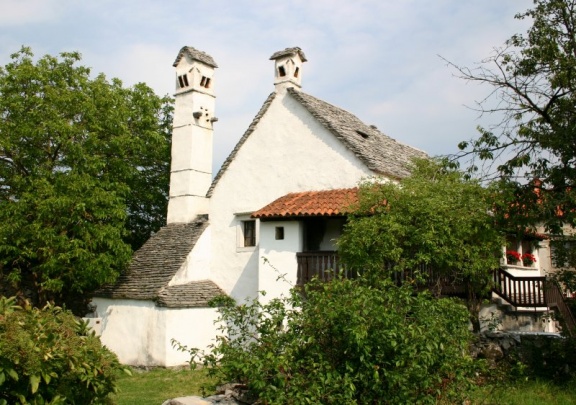Difference between revisions of "Škratelj Homestead"
m |
m |
||
| Line 30: | Line 30: | ||
Škratelj House in Divača features a permanent exhibition on Slovene movie star Ida Kravanja (stage name Ita Rina), which was conceived by the [[Slovenian Cinematheque]] and opened in [[Established::2000]]. | Škratelj House in Divača features a permanent exhibition on Slovene movie star Ida Kravanja (stage name Ita Rina), which was conceived by the [[Slovenian Cinematheque]] and opened in [[Established::2000]]. | ||
There are plans for the permanent exhibition on the actress to be supplemented by a museum of the Slovene Film Actors that will also include also a small cinema hall for screenings and workshops. The renovation is supported by the donation of Norway through the Norwegian Financial Mechanism. | There are plans for the permanent exhibition on the actress to be supplemented by a museum of the Slovene Film Actors that will also include also a small cinema hall for screenings and workshops. The renovation is supported by the donation of Norway through the Norwegian Financial Mechanism. | ||
| + | |||
| + | [[Image:Ita Rina poster.jpg]] | ||
==Ita Rina== | ==Ita Rina== | ||
| Line 37: | Line 39: | ||
The young Slovene actress first lived in Berlin, at that time centre of European film industry, and her debut was in the role of a chambermaid in ''Was die Kinder ihren Eltern verschweigen''. After 00''Erotikon'' she performed in the first Czech sound film ''Gallows Toni'' in 1930. She declined an invitation from Hollywood and instead moved to Belgrade, got married and changed her name to Tamara Djordjević. Thereafter she starred in several more films, including the Yugoslav production War (1960), however she never managed to regain her earlier fame. After the war she also appeared in several Yugoslav theatre productions. Ita Rina died in Budva, and was buried in Belgrade. | The young Slovene actress first lived in Berlin, at that time centre of European film industry, and her debut was in the role of a chambermaid in ''Was die Kinder ihren Eltern verschweigen''. After 00''Erotikon'' she performed in the first Czech sound film ''Gallows Toni'' in 1930. She declined an invitation from Hollywood and instead moved to Belgrade, got married and changed her name to Tamara Djordjević. Thereafter she starred in several more films, including the Yugoslav production War (1960), however she never managed to regain her earlier fame. After the war she also appeared in several Yugoslav theatre productions. Ita Rina died in Budva, and was buried in Belgrade. | ||
| − | |||
==Škratelj House== | ==Škratelj House== | ||
Revision as of 20:08, 21 February 2010
The young Slovene actress first lived in Berlin, at that time centre of European film industry, and her debut was in the role of a chambermaid in Was die Kinder ihren Eltern verschweigen. After 00Erotikon she performed in the first Czech sound film Gallows Toni in 1930. She declined an invitation from Hollywood and instead moved to Belgrade, got married and changed her name to Tamara Djordjević. Thereafter she starred in several more films, including the Yugoslav production War (1960), however she never managed to regain her earlier fame. After the war she also appeared in several Yugoslav theatre productions. Ita Rina died in Budva, and was buried in Belgrade.
Škratelj House
The architecture of Škratelj House and its courtyard (borjač), a monument of 17th-century Karst architecture, is well preserved. The exhibition on the first floor presents the life of Ita Rina and the development of Slovene film during her day.




